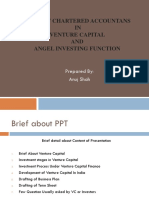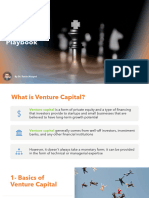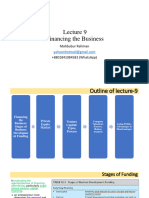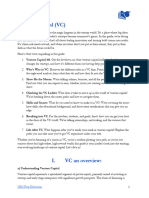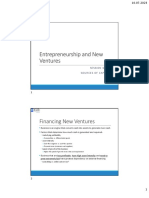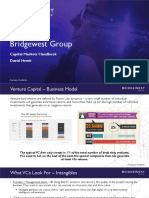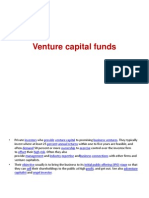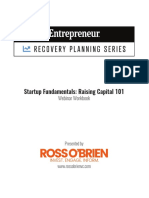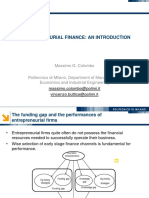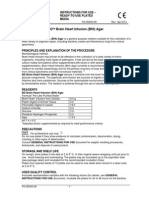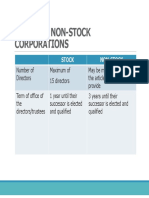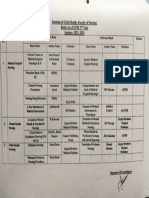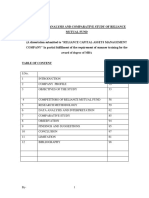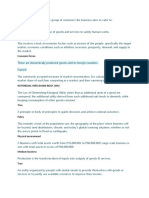0% found this document useful (0 votes)
55 views40 pagesWhat Drives Venture Capital
This document discusses how venture capital firms operate and the perspectives of both entrepreneurs and venture capitalists. It begins by outlining how venture capital firms are structured, with limited partners investing capital that is managed by general partners. The primary reason for different perspectives is that entrepreneurs are optimists focused on growth, while venture capitalists must seek high returns over shorter timeframes to satisfy limited partners. The case study of Sandbridge Technologies illustrates how market changes can impact investment outcomes. Overall, the document suggests that understanding each other's drivers is important for the entrepreneur-investor partnership to succeed. It concludes by noting that security token offerings and crowd funding are bringing new capital sources that may change the traditional private equity model.
Uploaded by
PamelaCopyright
© © All Rights Reserved
We take content rights seriously. If you suspect this is your content, claim it here.
Available Formats
Download as PPT, PDF, TXT or read online on Scribd
0% found this document useful (0 votes)
55 views40 pagesWhat Drives Venture Capital
This document discusses how venture capital firms operate and the perspectives of both entrepreneurs and venture capitalists. It begins by outlining how venture capital firms are structured, with limited partners investing capital that is managed by general partners. The primary reason for different perspectives is that entrepreneurs are optimists focused on growth, while venture capitalists must seek high returns over shorter timeframes to satisfy limited partners. The case study of Sandbridge Technologies illustrates how market changes can impact investment outcomes. Overall, the document suggests that understanding each other's drivers is important for the entrepreneur-investor partnership to succeed. It concludes by noting that security token offerings and crowd funding are bringing new capital sources that may change the traditional private equity model.
Uploaded by
PamelaCopyright
© © All Rights Reserved
We take content rights seriously. If you suspect this is your content, claim it here.
Available Formats
Download as PPT, PDF, TXT or read online on Scribd
/ 40
















